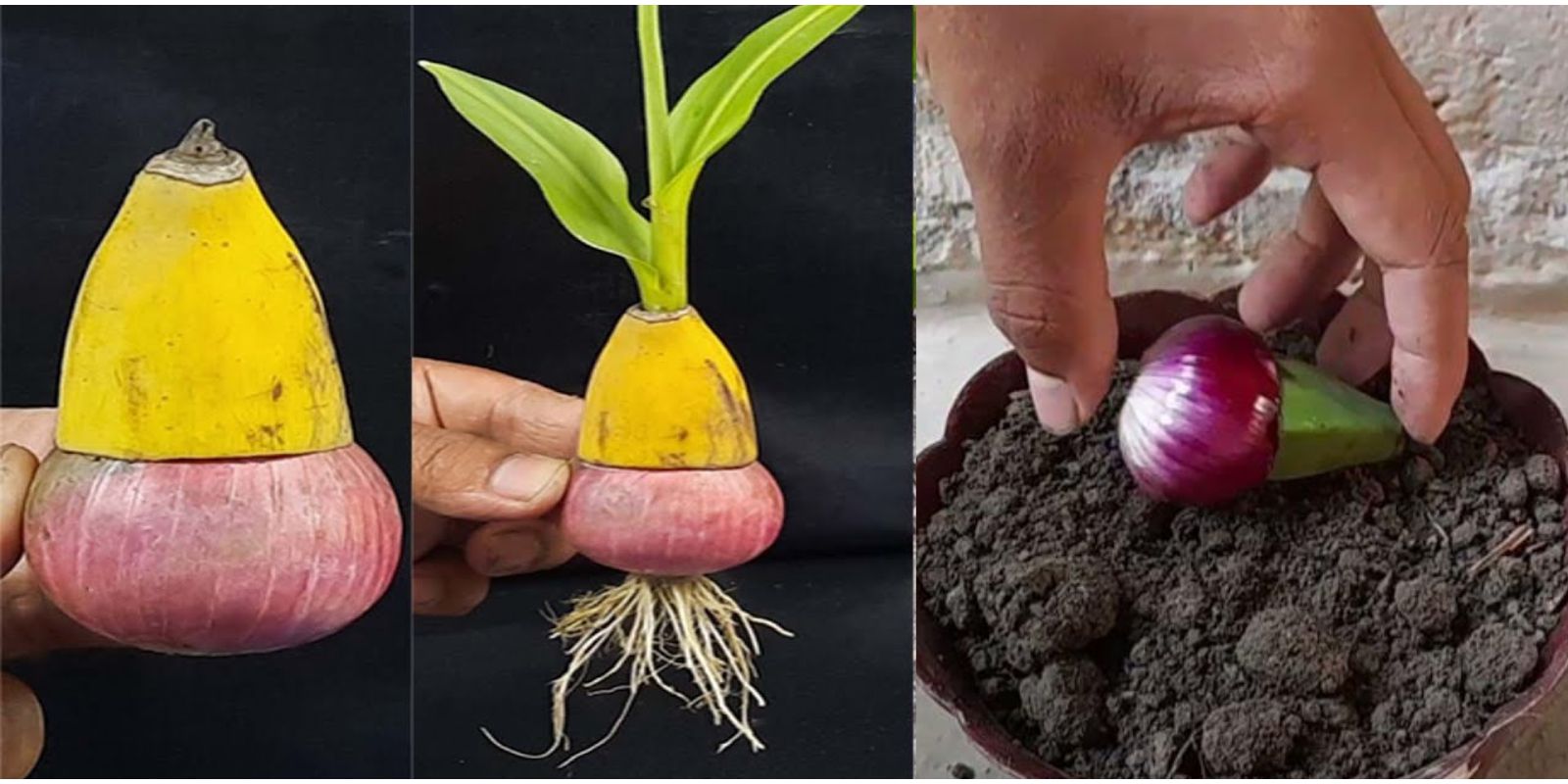Introduction
Bananas are a staple fruit in many households, loved for their versatility and health benefits. If you’ve ever thought about growing your own banana plants but want to ensure robust growth and a bountiful harvest, there’s a surprisingly effective, natural hack: using onions. This simple, eco-friendly technique stimulates the growth of banana plants, thanks to the natural compounds found in onions. In this article, we’ll dive into the step-by-step process of propagating bananas with onions, why it works, and how you can achieve incredible results in your garden or backyard.
Understanding the Science Behind Onions and Plant Growth
Onions contain natural growth stimulants, such as sulfur compounds and enzymes, that promote root development and ward off harmful bacteria. When applied to banana plant suckers (offshoots), onions create an environment that enhances the plant’s ability to establish strong roots and absorb nutrients. This method is not only effective but also a sustainable way to reduce dependency on chemical fertilizers or growth enhancers.
Why Propagate Bananas with Onions?
- Faster Root Development: Onions stimulate quicker root formation in banana suckers.
- Improved Nutrient Uptake: The natural enzymes in onions help the plant absorb nutrients more efficiently.
- Eco-Friendly Gardening: This method reduces the need for synthetic chemicals, making it perfect for organic gardeners.
- Cost-Effective: Onions are inexpensive and readily available in any kitchen.
Step-by-Step Guide to Banana Propagation with Onions
1. Choosing the Right Banana Sucker
To start, select a healthy banana sucker from a mature banana plant. A sucker is a small offshoot that grows from the base of the main plant. Look for suckers that are 12–18 inches tall, as these are mature enough to establish roots quickly.
2. Preparing the Onion
- Take a fresh onion and slice it in half.
- The cut side of the onion should be moist and juicy, as this is where the growth-enhancing compounds are most potent.
- Optionally, you can crush the onion lightly to release more of its natural juices.
3. Treating the Sucker
- Rub the cut side of the onion directly onto the base of the banana sucker, ensuring the juices coat the entire area where roots will form.
- Alternatively, you can place onion slices around the roots of the sucker before planting.
4. Preparing the Soil
- Use loose, well-draining soil that’s rich in organic matter. A mixture of garden soil, compost, and sand works well.
- Ensure the soil has a neutral pH, as overly acidic or alkaline conditions can hinder growth.
5. Planting the Sucker
- Dig a hole that’s deep enough to accommodate the sucker and its treated base.
- Place the sucker in the hole, ensuring the onion-treated area is in direct contact with the soil.
- Cover with soil and press gently to eliminate air pockets.
6. Watering
- Water the plant immediately after planting to help it settle and absorb nutrients.
- Keep the soil consistently moist but avoid waterlogging, which can lead to root rot.
7. Providing the Right Environment
- Place the plant in a location that receives 6–8 hours of sunlight daily.
- Protect young plants from strong winds, which can damage their fragile stems and leaves.
8. Ongoing Care
- Fertilize the plant monthly with an organic banana fertilizer or compost tea.
- Remove weeds around the plant to prevent competition for nutrients.
- Mulch the base of the plant to retain soil moisture and regulate temperature.
Benefits of Using This Method
- Stronger Plants: Plants propagated with onions tend to grow stronger and healthier, with better resistance to pests and diseases.
- Enhanced Yield: By promoting robust root systems, this method can lead to a higher yield of bananas.
- Natural and Safe: Using onions eliminates the need for synthetic rooting hormones or chemicals, making it a safer choice for your family and the environment.
- Low Maintenance: Once established, banana plants require minimal care, making them ideal for beginner gardeners.
Common Mistakes to Avoid
- Overwatering: While bananas thrive in moist soil, excessive water can lead to root rot. Always check the soil’s moisture level before watering.
- Using Unhealthy Suckers: A weak or diseased sucker will struggle to grow, even with onion treatment. Choose healthy, pest-free suckers.
- Ignoring Soil Quality: Poor soil can hinder growth. Always enrich your soil with compost or organic matter before planting.
- Lack of Sunlight: Bananas need plenty of sunlight to thrive. Ensure they are planted in a sunny location.
Success Tips for Thriving Banana Plants
- Add Organic Mulch: Spread mulch around the base of the plant to retain moisture and suppress weeds.
- Supplement with Banana Peels: Chop banana peels and bury them near the plant for an added nutrient boost.
- Monitor for Pests: Watch for common pests like aphids and treat them naturally with neem oil or soap spray.
Why This Method is Perfect for Urban Gardeners
Even if you have limited space, this propagation technique is ideal for container gardening. Use large pots or grow bags filled with nutrient-rich soil, and follow the same steps to propagate your banana plants. Urban gardeners can also benefit from the reduced cost and simplicity of this method.
Conclusion
Growing bananas using the onion propagation method is a game-changer for gardeners of all levels. This simple, cost-effective, and eco-friendly technique ensures healthier plants and higher yields, all while reducing your reliance on synthetic products. Whether you’re an experienced gardener or a beginner, this method is easy to try and offers impressive results.
💬 Have you ever tried propagating bananas with onions? Share your results and tips in the comments!
Hashtags for Engagement
#BananaPropagation #GrowBananas #GardeningHacks #EcoFriendlyGardening #SustainableGardening #NaturalGardening #UrbanFarming #GrowYourOwnFood #OrganicGardening #GreenThumbTips

